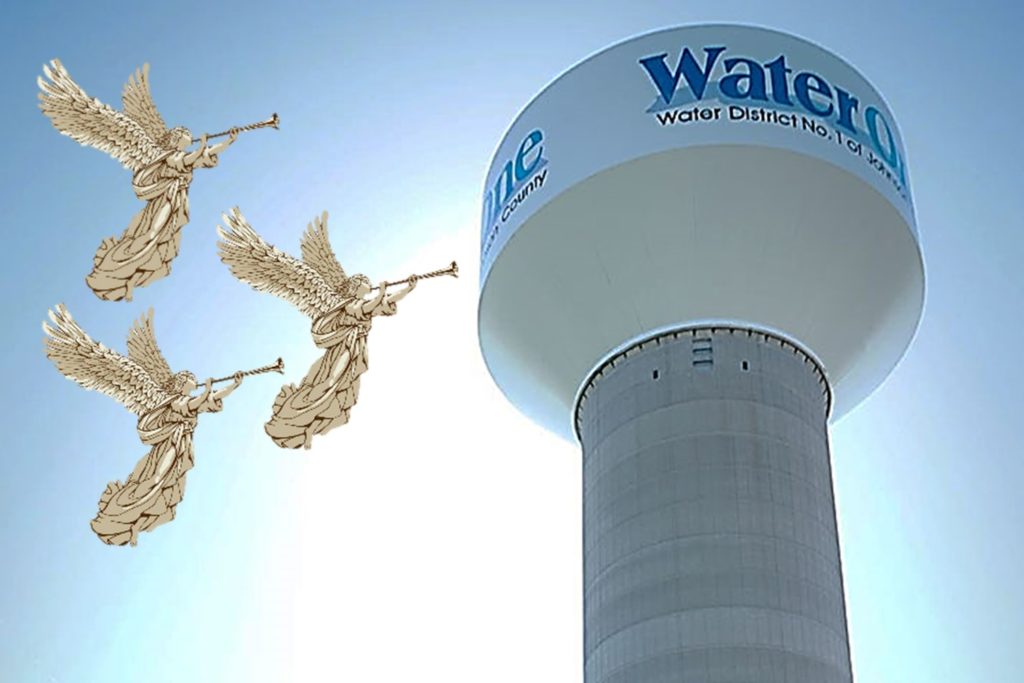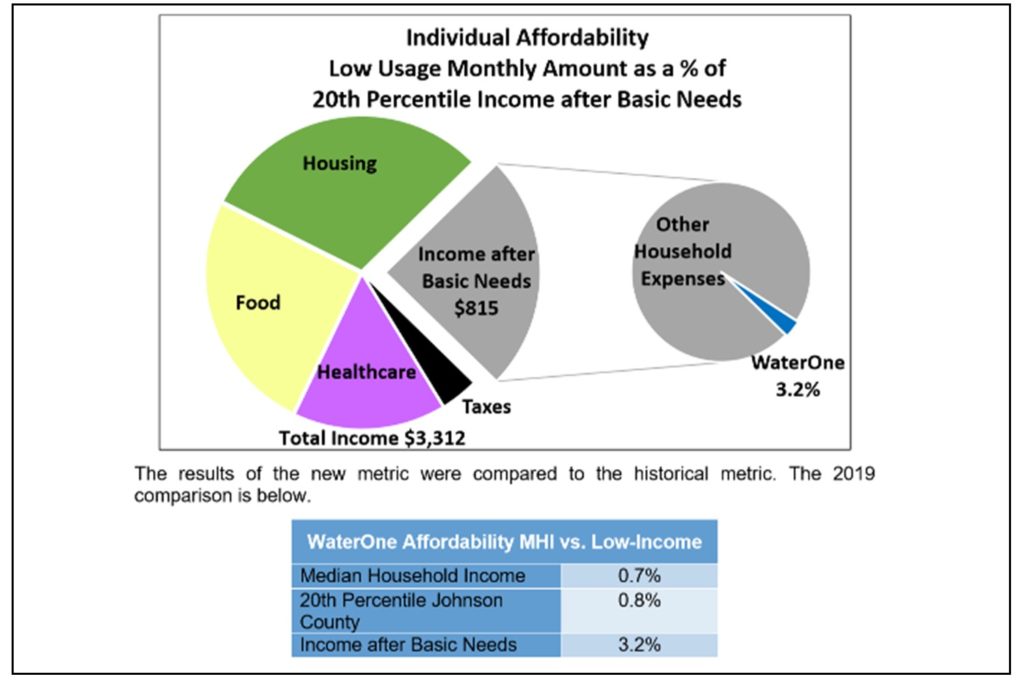A Kansas water utility gets affordability measurement right

Recently we’ve seen progress in affordability measurement, as more water utilities are using better metrics when evaluating affordability.* Last year I published a new methodology for measuring water and sewer utility affordability (AR20 and HM), and followed that up with a national assessment using those metrics. AR20 is the Affordability Ratio of basic water and sewer service price divided by disposable income at the 20th percentile household income. HMis basic water and sewer service expressed in Hours of labor at Minimum wage. These metrics seek to capture the trade-offs that low-income households must make in paying for water and sewer services. Utilities have begun to use these and other improved metrics, which is encouraging!
Too hard?
The main objection I’ve seen to the real-world use of AR20 is that it can seem too complicated. You need to know the community’s 20th percentile income
and essential non-water/sewer costs of living in order to calculate AR20. But there’s no convenient, off-the-shelf source for those numbers. You have to think about economic conditions in your community. I usually include housing, health care, taxes, food, and home energy as essential non-water/sewer costs, and I use statistical models to estimate those expenses. Statistical models are important in my research because I’m analyzing affordability across hundreds of communities. Apparently that’s led some to think that regression models using consumer data are the only way to estimate household expenses, so estimating costs-of-living for a specific utility is impossibly difficult.†
Fortunately, it’s not really that hard. Since publishing my 2018 article, I’ve heard from folks in utilities large and small about efforts to use these metrics exactly as they were intended: adapting AR20 to fit local needs, calculating it with local data, and using it to shape local decisions.
WaterOne’s excellent measurement adventure
An especially encouraging case is WaterOne, a special district that provides drinking water to a population of about 425,000 in the Johnson County suburbs southwest of Kansas City. As in plenty of other utilities, WaterOne’s leaders have long been interested in the affordability of their service, but had also long employed the conventional 2%MHI as their affordability metric. Dissatisfied with the nonsensical conventional metric, WaterOne’s Natalie Morrison and Cassandra Gunther decided to use AR20 to assess affordability and guide policy for their own system.
Local calibration

Making AR20 work for WaterOne required adapting it to local preferences and conditions in a few ways. First, the original AR20 was calculated for water and sewer combined; since WaterOne provides only drinking water, its AR20
calculation included only water rates, not sewer rates. Second, WaterOne analyzed its own customer data and decided that 45 gallons per capita per day and a 2.6-person household were the appropriate basic water consumption level for its customers (my published studies assume a 4-person household at 50 gpcd). Third, WaterOne chose to exclude home energy from their calculation of essential non-water/sewer costs. Rather than constructing an econometric model to estimate essential non-water costs, Morrison and Gunther used available data and guidelines from the Census, IRS, USDA, and Bureau of Labor Statistics to estimate appropriate costs for its service area.
The result was a WaterOne-specific AR20 that showed the remarkable difference between the conventional %MHI method and the more meaningful AR20. After they’d done all that work, Cassandra Gunther contacted me to ask for feedback. We had a terrific phone call with WaterOne leadership where I offered some comments on their execution, but I didn’t have much of a critique to offer—they pretty much got it right.
From analysis to decision
The results were reported with the district’s 2019 budget and written up in a white paper for WaterOne’s Board of directors. Crucially, the paper uses the affordability metrics to frame a discussion of goals and guidelines, not to declare WaterOne’s rates “affordable” or “not affordable” according to some arbitrary threshold. They also warned against comparing AR20 values to my published works and to other systems’ AR20 values, since WaterOne’s AR20 is based on different assumptions and WaterOne’s values may not align with others.’
Measurement principles in practice
Complexity isn’t an excuse for crummy measurement; it’s a reason to be careful with measurement. A modicum of creativity can get you there. Want to know what low-income families pay for health insurance locally? Go to healthcare.gov. Need an estimate for local low-income housing costs? Check craigslist.org. Check with local charitable organizations to find out what low-income families pay for food or home energy. You don’t need a PhD or advanced econometric skill to do sound affordability analysis.
WaterOne answered the affordability measurement challenge with a thoughtful, nuanced analysis that applied community values to the best available data. Adapting AR20 for WaterOne—WOAR20?—is a fine of example how utilities can put measurement principles into practice.
*The conventional approach to water affordability measurement (average bill as a percentage of Median Household Income (%MHI) is deeply flawed, as I’ve blogged previously. Despite its well-document problems, use of %MHI remains widespread—mainly because it’s easy and familiar.
†My estimates are based on publicly-available Consumer Expenditure Survey data and Ordinary Least Squares regression. They’re not especially sophisticated.
